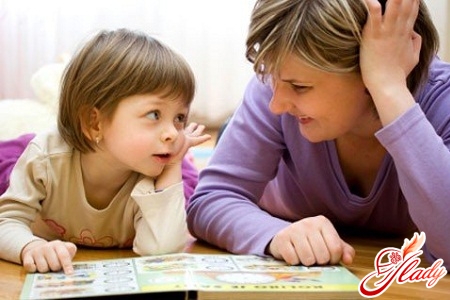 Just yesterday your little one was cooing amusingly, touchinglythose around him with his smile. And today he goes to kindergarten, and school is just around the corner. Perhaps he even knows all, or almost all, the letters, recites poems and is generally an extremely smart child. But you are haunted by the thought that something is wrong with him. Of course! The baby does not pronounce the letter "r". And this is in the best case - in the worst case, the baby may have real "porridge" in his mouth! What should parents do in such a situation? It would seem that the answer is obvious - speech therapy exercises will help solve the problem. And this is right, but only partly. You should not rush things and try to correct this defect in children under five years old. Speech therapists explain - if the child is developing harmoniously, does not have any problems with the articulatory apparatus, then the sound "r" in his speech will appear only by the age of five. This sound is the very last one that appears in the baby. However, in some cases, the baby will not be able to pronounce the letter "r" on his own. In this case, be sure to show the child to a doctor - a dentist - in half of all such cases, the cause of the problem is a shortened sublingual frenulum. In this case, the problem is solved very simply - just trim it. The operation will take no more than ten seconds, and by the evening the child will completely forget about it. But in the second half of cases, to put the letter "r", most likely, the child will need the help of a speech therapist. However, in most cases, parents can try to do it themselves. For this, you will need very little - free time, patience and knowledge of what exactly needs to be done.
Just yesterday your little one was cooing amusingly, touchinglythose around him with his smile. And today he goes to kindergarten, and school is just around the corner. Perhaps he even knows all, or almost all, the letters, recites poems and is generally an extremely smart child. But you are haunted by the thought that something is wrong with him. Of course! The baby does not pronounce the letter "r". And this is in the best case - in the worst case, the baby may have real "porridge" in his mouth! What should parents do in such a situation? It would seem that the answer is obvious - speech therapy exercises will help solve the problem. And this is right, but only partly. You should not rush things and try to correct this defect in children under five years old. Speech therapists explain - if the child is developing harmoniously, does not have any problems with the articulatory apparatus, then the sound "r" in his speech will appear only by the age of five. This sound is the very last one that appears in the baby. However, in some cases, the baby will not be able to pronounce the letter "r" on his own. In this case, be sure to show the child to a doctor - a dentist - in half of all such cases, the cause of the problem is a shortened sublingual frenulum. In this case, the problem is solved very simply - just trim it. The operation will take no more than ten seconds, and by the evening the child will completely forget about it. But in the second half of cases, to put the letter "r", most likely, the child will need the help of a speech therapist. However, in most cases, parents can try to do it themselves. For this, you will need very little - free time, patience and knowledge of what exactly needs to be done.
Preparatory exercises
Speech therapy sessions with a child – the processis quite long, so you shouldn't expect the child to start pronouncing the letter "r" by the end of the first lesson. Before you start directly with the sound production, you need to prepare the speech apparatus and lungs. The following exercises are ideal for this:
- We train the lungs
So that the child pronounces correctlythe letter "r", you need to teach him to exhale correctly. To do this, try doing this exercise with your child: ask the child to inhale very deeply, and then not just exhale, but blow hard, as if blowing out an imaginary candle, making the lips vibrate. Parents should practice first themselves in order to clearly demonstrate to the child. By the way, some speech therapists advise using a real candle to make the task easier for the child. However, of course, in no case should you forget about fire safety. The child should repeat this exercise at least ten times.
- Practicing the language
The baby should completely relax his tongue andsqueeze it between the teeth. Then you need to take a deep breath and exhale with force, pronouncing a vowel, making the tongue vibrate. The child's tongue and lips should be completely relaxed. In order to check if the exercise is performed correctly, you need to bring your palm to the child's mouth - if everything is correct, you will feel a sharp stream of cold air. This exercise should be done about ten times in a row. No less useful is the so-called "clicking" of the tongue. Ask the child to vocalize the gait of a horse - first show the child how to do this. The tongue should first touch the palate with its entire surface, and then sharply fall down. In order for this exercise to bring the expected benefit, it is necessary to monitor the child's lower jaw - it should be relaxed. This exercise should continue for about one minute. Ask the child to open his mouth so that the gap between the teeth is about two fingers. Ask the baby to raise the tongue and touch the palate with it - the bridle should be as tense as possible. The tongue should be held in this position for as long as possible.
Articulatory gymnastics
After a week of preparatory exercises you canproceed directly to performing articulatory gymnastics. Speech therapists have a very large number of various exercises in their arsenal, but we will only tell you about the most effective of them. So, speech therapy exercises - letter R:
- Swing
This exercise is one of the mosteffective not only for the letter "r", but also for the purity of speech in general. Ask the baby to smile and open his mouth wide. After that, start counting to the beat "one - two". For each of your counts, the child should move the tip of the tense tongue from one corner of the lips to the other. The baby's lower jaw should remain motionless throughout the entire exercise. The duration of this exercise is about two minutes.
- Brush and paint
The starting position for this exercise is similar toprevious - ask the baby to smile and open his mouth. Then show the child how to run a relaxed tongue along the palate from the teeth to the throat, like a brush on paper. The child's lower jaw should be motionless. The time for this exercise is five minutes.
- Toothbrush
Ask your baby to smile and open his eyes slightly.mouth. With the tense tip of the tongue, the baby should imitate the movements of a toothbrush on the upper teeth. The movements should be very diverse - both up and down, and circular. The duration of the exercise should be about three minutes.
- Calculate the teeth
And again ask the baby to open his mouth slightly.The child should touch each tooth from the top row, from the inside, in turn with the tense tip of the tongue. In just one session, the child should count his teeth at least ten times. The baby's lower jaw should remain motionless the entire time.
- Playing the accordion
Ask your child to smile widely and openmouth. The relaxed tongue must be fixed on the palate, after which the mouth must be opened and closed ten times. After this, the child must completely relax all facial muscles for a couple of minutes.
- Drumroll
Ask your baby to open his mouth.Without closing it, the baby should clearly and repeatedly pronounce the sound "d-d-d-d". Make sure that his tongue is constantly resting against the upper teeth, and the mouth remains open. The duration of this exercise is three minutes.
- Mosquito
The starting position is the same: open mouth. The child should put the tip of the tongue behind the upper teeth, after which he should pronounce the sound "zzz". The duration of the exercise is three minutes.
Pronouncing the sound "P" in a conversation
Once your child has mastered everything wellthe above exercises, you can move on to the next stage - setting the pronunciation of the hard sound "r". To begin, ask the child to do the following: The tense tip of the tongue must be pressed to the palate, and the edges of the tongue - to the upper molars. After this, the child should try to pronounce the letter "r". If everything works out, the tip of the tongue should vibrate. If everything is done correctly, the sound will be clear and strong. If this does not happen, start all over again. However, despite the fact that your child can pronounce the sound "r" upon request, do not rush to rejoice and consider that the job is done. Of course, this is a big breakthrough, but far from all, but only half. It is necessary to automate the correct pronunciation of this sound during the child's conversation. But you can start this only after the child has learned to easily pronounce "r" in isolation. Otherwise, all your efforts will go down the drain. Automation of the pronunciation of the sound "r" - is a very painstaking task that can take a very long time. First, the child will need to learn to pronounce the letter "r" in separate syllables, then in words, and only then in sentences. And only after that can you expect normal pronunciation of the letter "r" in spontaneous speech. To begin with, you need to teach the child to pronounce the letter "r" well as part of syllables with consonants - for example, pr.., sr... After the child has mastered this pronunciation, move on to the next stage - pronouncing the sound "r" in direct syllables, for example ra..pa... And only after that can you teach the child to pronounce the sound "r" at the end of words. After all these stages, the actual automation of the pronunciation of the letter begins. Various poems, tongue twisters and tongue twisters will help you with this task. They are very effective for automating the pronunciation of the letter "r", but only on condition that they are selected according to the age category. And this is quite understandable - after all, speech therapy exercises for 3-year-old children will differ significantly from the same exercises designed for older children. Finally, I would like to repeat once again - do not rush and do not rush things. It is unlikely that you will be able to cope with the task in two or three weeks, or even a month. On average, pronunciation of the sound "r" takes about three months, although in some cases it can take both more and less time. Be patient enough and do not scold the child in any case if he does not succeed in something the first time. If the classes are held under pressure and in a tense atmosphere, their effectiveness will be significantly lower. Therefore, the child should constantly feel the support of his parents and study with pleasure. And do not forget to show the child to a speech therapist later!









